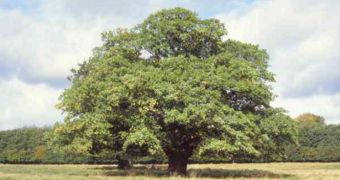It's a well-known fact that humans cannot survive without the thousands of species of bacteria that exist within our guts. They help us break down certain compounds, so that we can make the most out of what we eat. But a new study shows that we are not the only species who engages in such behavior. Certain species of trees develop similar symbiotic relationship with microorganisms living next to their roots. This happens especially often under trees living in nutrient-poor soil, which cannot get daily amounts of nutrients they require on their own, ScienceDaily reports.
This is why certain tree species learned to foster microbe colonies, which produce compounds that the trees can use to grow. In this particular case, the microbes turn inorganic matter into organic matter, which trees can then convert further. “In acidic forest soils, availability of inorganic nutrients is a tree-growth-limiting factor. A hypothesis to explain sustainable forest development proposes that tree roots select soil microbes involved in central biogeochemical processes, such as mineral weathering, that may contribute to nutrient mobilization and tree nutrition,” explains Stephane Uroz.
He is a research associate with the ‘Ecogenomics of Interactions’ Lab at the French Institute National de la Recherche Agronomique (INRA), and also an author of the new study. The paper appears in the July 2010 issue of the esteemed scientific journal Applied and Environmental Microbiology. “This question regarding the impact of tree species on the functional diversity of the bacterial communities remains a major issue in forestry, especially in the context of today's climate change, which will give rise to a shift in the spatial distribution of forest tree species,” says Uroz, who received his PhD in Microbial Ecology from the University of Paris XI in Orsay in 2004.
“Our results suggest that certain tree species have developed indirect strategies for mineral weathering in nutrient-poor soils, which lie in the selection of bacterial communities with efficient mineral weathering potentials,” the expert adds. The investigator focused on tree species including beech, oak and Norway spruce trees, samples of which were collected and then carefully analyzed in the lab. When grown in bacteria-rich environments, oak and beech trees proved capable of drawing benefits from their neighbors, whereas Norway spruce trees did not.

 14 DAY TRIAL //
14 DAY TRIAL //